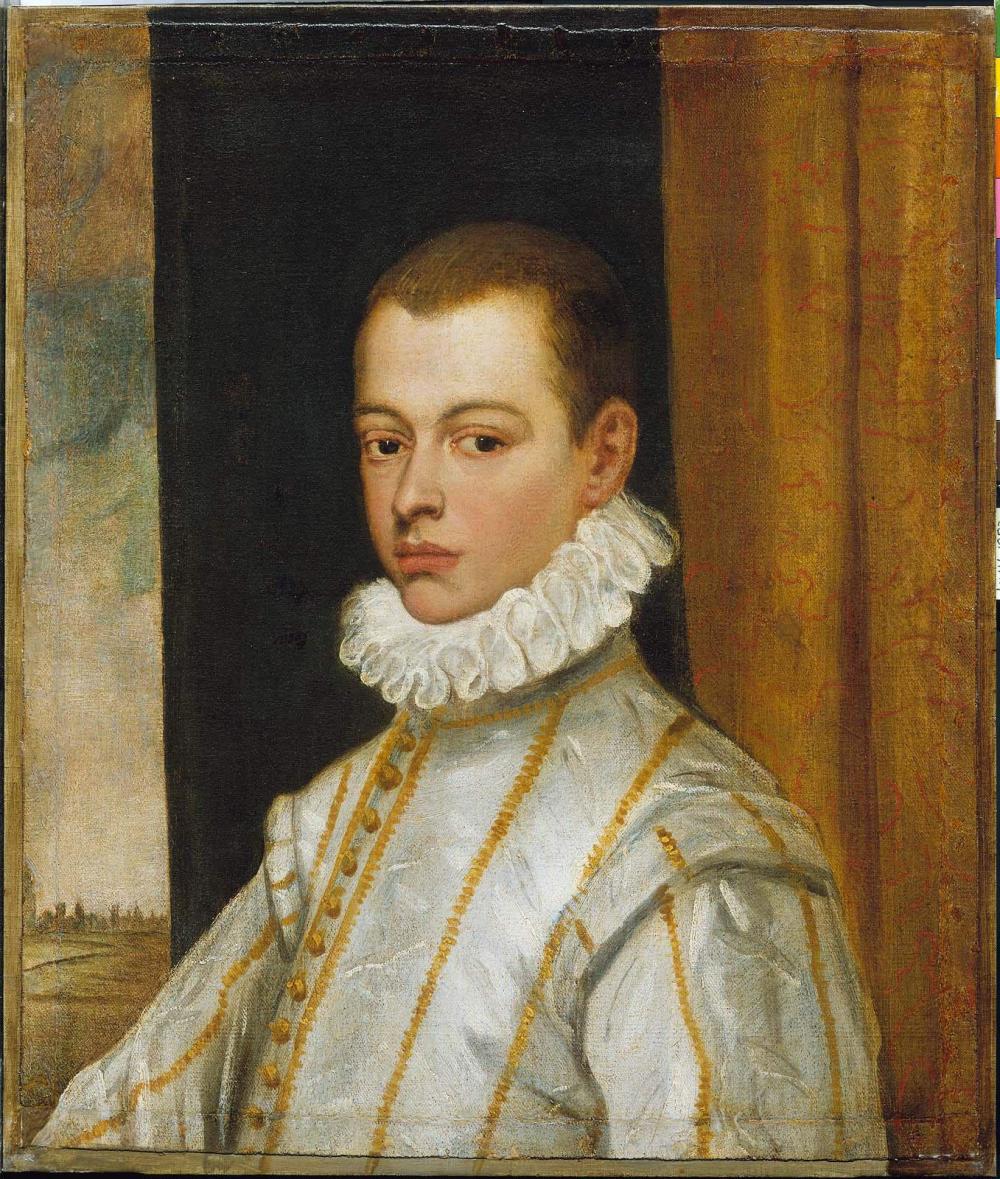Advanced Search 
In the late 16th century, following his father’s example, Domenico became one of Venice’s dominant portrait painters. Here, posing near a window, a young man wears a silvery-white satin tunic with an elaborate high collar. Though he remains unidentified, various identities have been suggested. Perhaps he is the young Aloysius (Luigi) Gonzaga (1568–1591), shown just before he renounced his aristocratic privileges to become a Jesuit (only to die in an epidemic six years later). Gonzaga was made a saint in the early 18th century.

Portrait of a Young Man
Domenico Tintoretto (Domenico Robusti) (Italian (Venetian), 1560–1635)
about 1580–85
Medium/Technique
Oil on canvas
Dimensions
64.8 x 55.3 cm (25 1/2 x 21 3/4 in.)
Credit Line
Museum purchase with funds donated by Mrs. Walter Scott Fitz and Robert Treat Paine, 2nd
Accession Number27.862
CollectionsEurope
ClassificationsPaintings
In the late 16th century, following his father’s example, Domenico became one of Venice’s dominant portrait painters. Here, posing near a window, a young man wears a silvery-white satin tunic with an elaborate high collar. Though he remains unidentified, various identities have been suggested. Perhaps he is the young Aloysius (Luigi) Gonzaga (1568–1591), shown just before he renounced his aristocratic privileges to become a Jesuit (only to die in an epidemic six years later). Gonzaga was made a saint in the early 18th century.
ProvenanceNovember 23, 1836, sold by a Signor Romano, Venice, to John Waldie (d. 1865), Hendersyde Park, Kelso, Scotland [see note 1]; by inheritance to his nephew, George Waldie-Griffith (b. 1820 – d. 1889), 2d Bart., Hendersyde Park; by inheritance to his son, Richard John Waldie-Griffith (b. 1850 – d. 1939), 3d Bart., and his wife, Alice Maud Pearson (d. 1955), Lady Waldie-Griffith, Hendersyde Park; 1927, sold by Lady Waldie-Griffith to Agnew and Sons, London (stock no. 6753); 1927, sold by Agnew to the MFA [see note 2]. (Accession Date: December 29, 1927)
NOTES: [1] On the early history of the portrait and its inheritance within the Waldie-Griffith family, see Barbara Pezzini and Michael G. Brennan, “Provenance as a history of change: from Caliari in Scotland to Tintoretto in America,” Journal of the History of Collections 30, no. 1 (2018): pp.77-89. It was sold in 1836 as a self-portrait by Carlo Cagliari, son of the painter Paolo Veronese.
[2] The painting was sold as a portrait of Alessandro Farnese by Jacopo Tintoretto. Colin Agnew wrote to Edward J. Holmes of the MFA (December 6, 1927 and December 10, 1927) that the painting had "been [at Hendersyde Park] for at least a century, having been brought there by an ancestor of the recent owner" and "brought to the British Isles a hundred years ago."
NOTES: [1] On the early history of the portrait and its inheritance within the Waldie-Griffith family, see Barbara Pezzini and Michael G. Brennan, “Provenance as a history of change: from Caliari in Scotland to Tintoretto in America,” Journal of the History of Collections 30, no. 1 (2018): pp.77-89. It was sold in 1836 as a self-portrait by Carlo Cagliari, son of the painter Paolo Veronese.
[2] The painting was sold as a portrait of Alessandro Farnese by Jacopo Tintoretto. Colin Agnew wrote to Edward J. Holmes of the MFA (December 6, 1927 and December 10, 1927) that the painting had "been [at Hendersyde Park] for at least a century, having been brought there by an ancestor of the recent owner" and "brought to the British Isles a hundred years ago."
